Medieval History
Musée Nissim de Camondo meets Malmaison
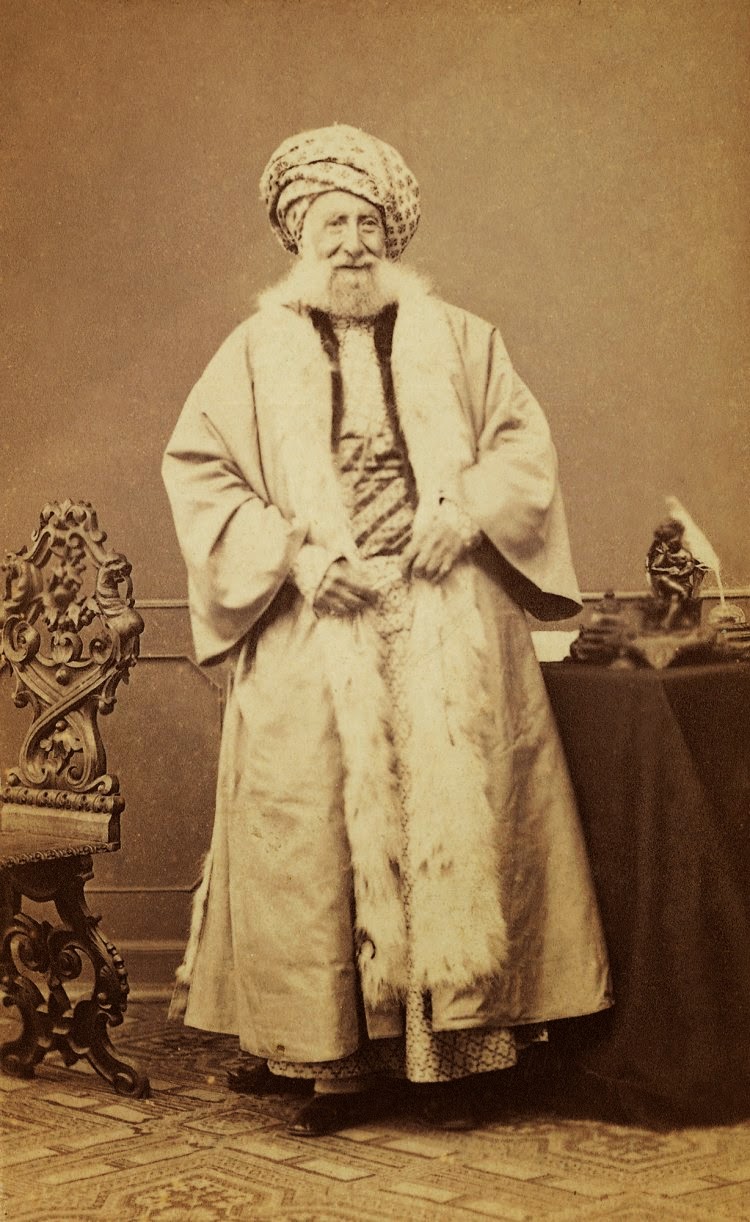 |
| Abraham Solomon de Camondo |
The Musée de Nissim de Camondo and Malmaison meet in the Middle East, are furnished by far-flung itineraries of modernity, and come to rest in Paris. A section of my "Politics/History of Display" course will feature house museums, specifically those that are shaped by their owners' identities and/or collections outside of Europe, and these sites offer treasure troves of possibilities. "Treasure" is an operative word, in all its problematics. The houses house treasures, the houses
are treasures, all bespeaking histories of fascination, exchange, and exploitation (capitalism and culture) . There's no comparing them: they are stopping points along the long trajectory that has linked France and the Middle East since the Crusades in the 12th century. Nissim de Camondo's path to Paris begins in 1492, when Queen Isabella of Spain exiled all Jews from her kingdom. The family emigrated to Venice, and 300 years later when the Austrians came, to Istanbul. At the very same time that Napoleon was leading his wild campaigns in Egypt and Syria (1798-1801), Abraham Solomon Camondo and his family established what would become the Imperial Ottoman bank in 1863 with a thriving subsidiary in Paris as of 1869.
 |
| Beatrice and Nissim de Camondo |
In 1870, King Victor Emmanuel II of Italy made Abraham a hereditary count, changing the family name to "de Camondo" in honor of the family's contributions to Italy during another set of Austria attacks. A new country bestowing an ancient title on an esteemed family. Abraham would join his son Moïse in Paris and die there three years later. He would be buried in the Jewish cemetery of Istanbul and that wish, and images of him, close out the long chapter we know of this family that began in Spain. The rather stunning shift in costume and demeanor from Abraham to Nissim in these two photos tell a tale of modernity, of France and the Ottoman Empire, of this family negotiating two worlds. Moïse, son of Abraham, built the house you can visit today in the posh 16th arrondissment near the Parc Monceau in 1911, and raised his two children, Nissim and Beatrice, there.
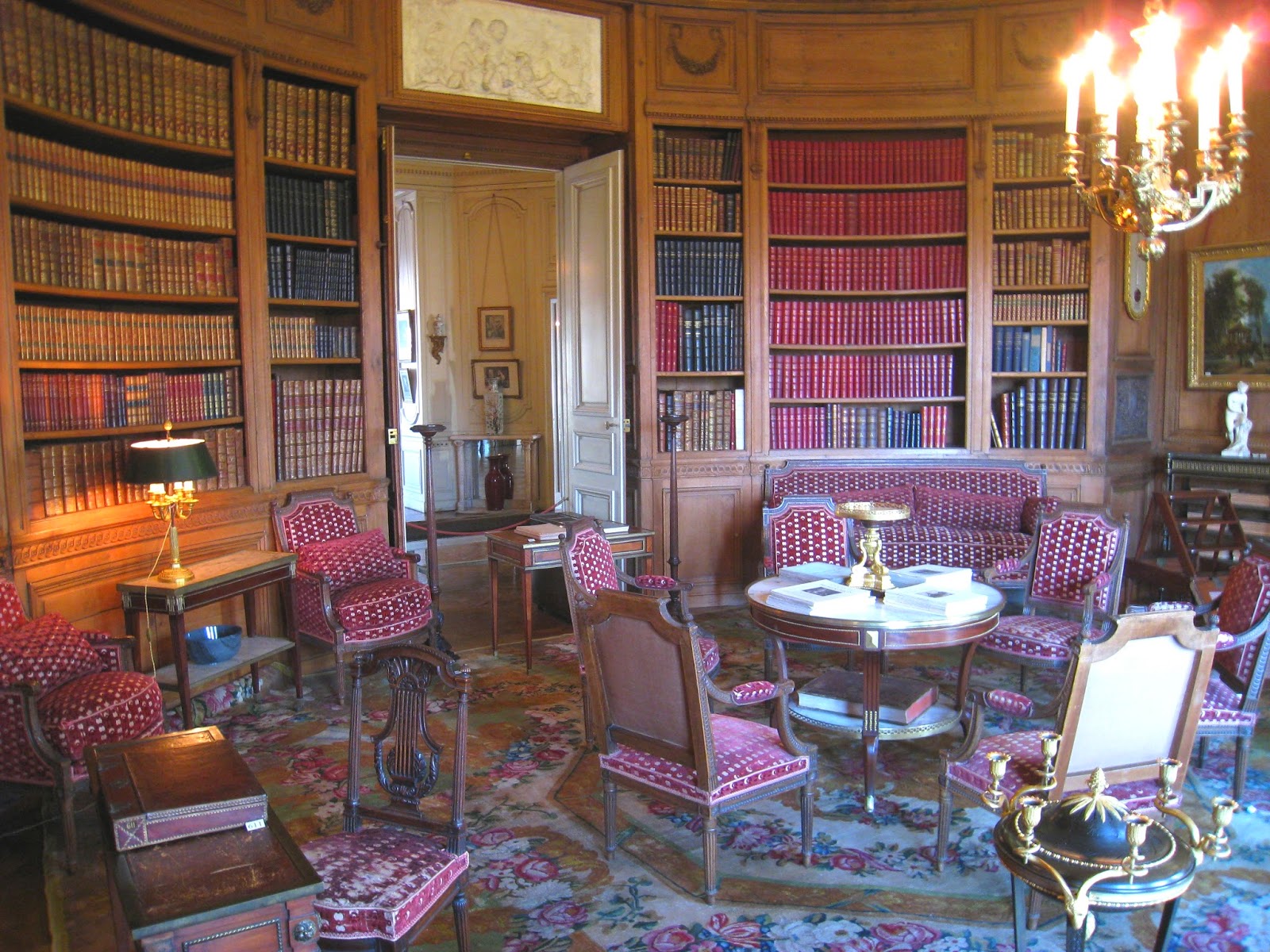 |
Books bound unbounded at the
Musée Nissim de Camondo |
There is a strange intimacy in this house. Everything seems so whole, so complete: no restorations, no substitutions: these are the books of Moïse, these are the hallways that Nissim and Beatrice ran down, this is the dining room where they ate, here is the porcelain collection they used. The house was only lived in for 14 years: Nissim was killed in 1917, serving in the French air force. It was then that Moïse decided to will the house to the French government. When he died in 1935, the house was given to the Musée des Arts Décoratifs, which is still its steward today. It heralds the house not as the culmination of hundreds of years of displacements and achievements, not as a crossroads of France and the Ottoman Empire, but as one of the finest collections of 18th-century furnishings anywhere in Paris. Which it is. But.
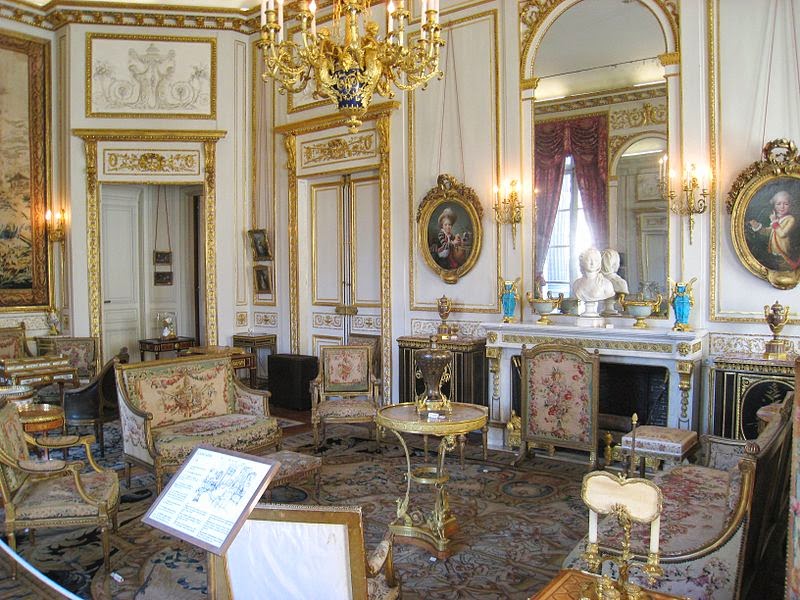 |
| The Grand Salon |
So this would be one of the conversations we would have in this class: what is spoken, written up, and celebrated in any museum setting; what is mentioned, elided over, glossed and in what proportion. Because the only thing that acknowledges the end of the Camondo family at Auschwitz, where Beatrice, her husband and her two young children died in 1944, is an inscription in the entrance drive stating the names and relationships of the house's inhabitants. The big bunch of fresh flowers in the red, white, and blue of the French flag tell a story of more care, more attention - what were the decisions made? Would the tragedy frame the house or the house the tragedy? It's not remotely that simple, but that is certainly the tension I felt going into the house - my mind thinking back to that entrance inscription, while the text everywhere drew my attention to this fine 18th century rug, this amazing Louis XVth chair. And it
is an astounding collection of French 18th-century furniture and furnishings.(1) And here, in being astounding and complete it becomes very difficult. I need to think of a critical framework that can sustain the question: "How dare this furniture survive and its collectors not?" How dare this fussy, overblown, furniture of scandalous French privilege survive and its philanthropic, complex, Jewish collectors not? Maybe this should get shut down right away: maybe there is no critical framework for moral indignation, or historical shock. Maybe the framework should be to trace the trajectory: to track what would motivate Moïse, a child of Istanbul, a banker of an international world renewed by early 20th-century capitalism, to collect works of art heralded as the epitome of French style and French elegance,
which was itself derived from the early flourishing of capitalism and the availability of Indian cotton and Chinese silk that it created. To trace the violent rupture in the trajectory so that in 1943, neither Beatrice's conversion to Catholicism, nor her philanthropic work continuing that of her father, nor her socio-economic standing, nor her friends could stop the Gestapo.
I could use help on this. It's a powerful testing ground for the clash of materiality and ethics, for an unforgiving and unconscionable presence in the face of human absence.
 |
| Paintings at Malmaison |
To say that Napoleon could fill a room is an understatement. And no, I'm not trying to be funny. His presence at Malmaison brings with it the ghosts and shadows of hundreds of thousands more. He peopled it that way, and these presences remain. Past the entrance hall, past the billiards room, is a small antechamber which houses the six portraits of the Sheiks of the Divan of Cairo that Napoleon had commissioned when he was First Consul (between 1799-1804). He had them painted by a Michele Rigo, and they hung in the billiard room until 1810.
There's a conversation.
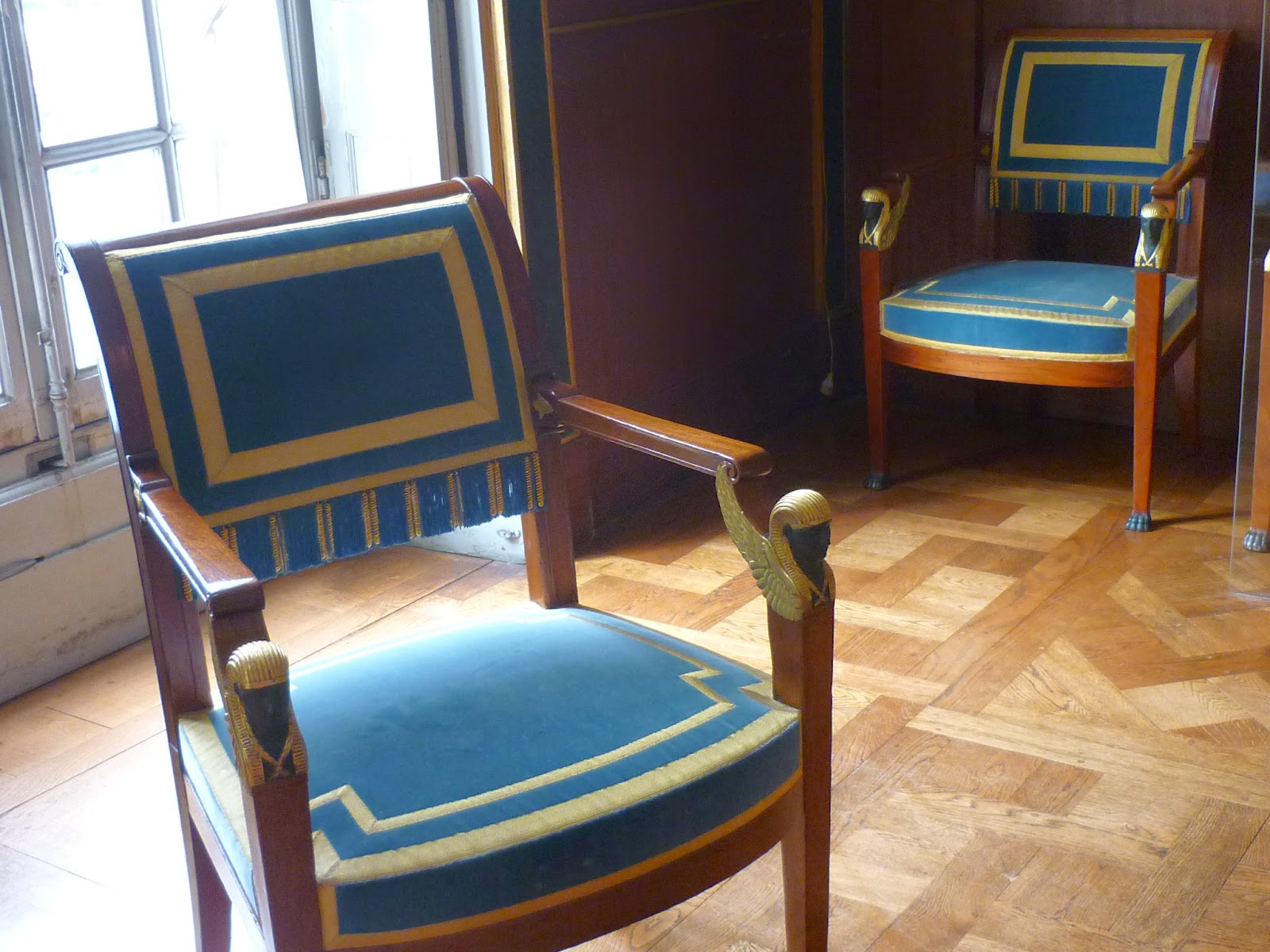 |
| The Egyptian heads on chairs |
In a geopolitic harkening back to the Crusades, and certainly Christopher Columbus's forays, Napoleon attempted to thwart Britain's access to its colonies in India by controlling Egypt. A complex series of moves that would ultimately fail militarily but gain tremendous traction culturally (the Rosetta stone, and Champollion's translation and an enormous chapter of Orientalism). How Napoleon brought his campaign in Egypt and Syria "home" will be what I would want to study. These portraits (minor academic painter, a series, billiard room?, friends and colleagues?), the chairs of almost all of the rooms, with their Egyptian heads at the arms...
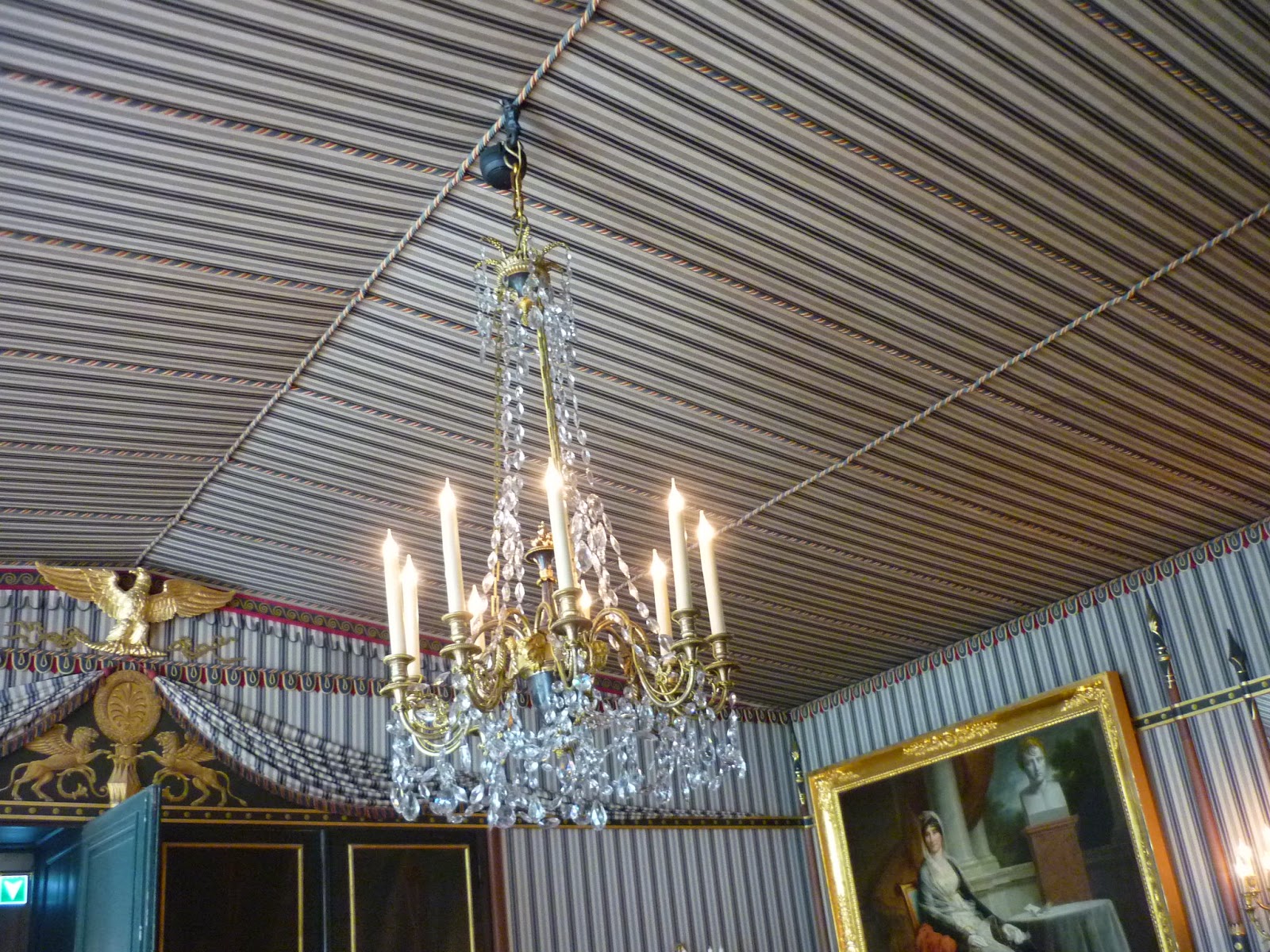 |
| Tent ceiling of the Council Room |
... the tent ceiling of the Council Room. Deep in the research of my dissertation, I found Napoleon exclaiming to Alexandre Lenoir in the 12th-century room the latter had established at the Grands Augustins, "Cette lumière me rapelle ma belle Syrie!" or words to that effect. I went nuts with it because here was Napoleon being reminded of Syria by a room illuminated with 13th-century French stained glass. There's much to read on Napoleon and Egypt and Syria and I can't wait to do so for this class. In the meantime, his Council Room sits, bedraped by/as an enormous military tent, as these had been set up in Europe, as he had set them up in Egypt.
 |
| Shock |
You could say that Napoleon and his ambitions filled just about any space he inhabited, but Malmaison, this house that belonged to Josephine, this retreat, this haven, 30 minutes from Paris, was where he worked. It, along with the Tuileries, was actually the seat of the French government in the early 20th century. Napoleon and his counselors, and eventually visitors like Thomas Jefferson would come here and would do things like sign the Louisiana Purchase of 1803 (I need to keep researching this, I've found "Paris" as the site, thus far, but the Treaty of Ildefonso of 1800, in which Spain returned the Louisiana territory to France was definitely signed here - you see Oliver and Iris processing the shock of Really Big Things having been decided, signed and sealed, in the very room where they stood. That's its own kind of Stendhal Syndrome).
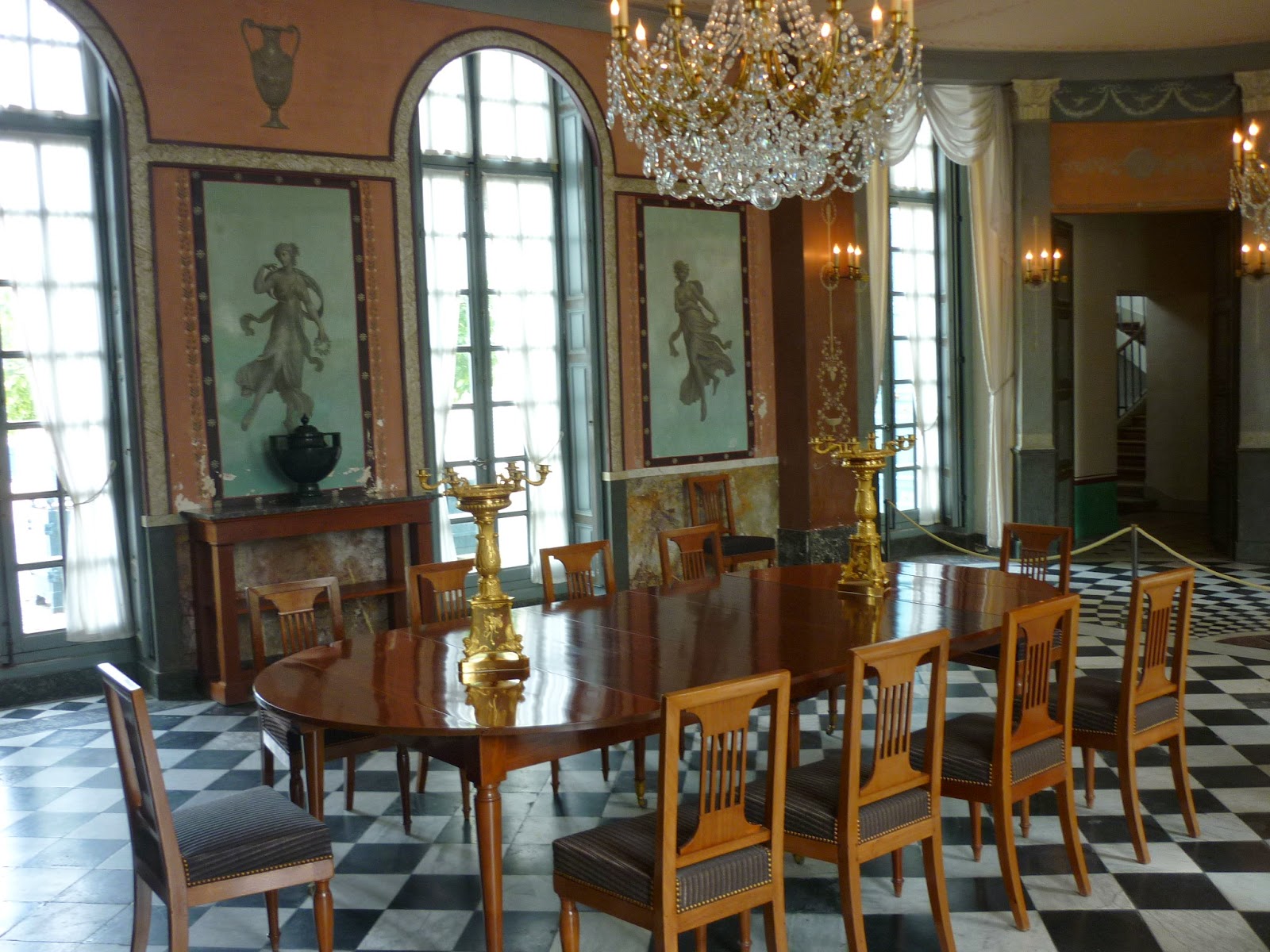 |
| And now to dine |
It's all here: Egypt, France, Italy (the dining room is modeled on a Roman villa, breezy between the billiard room and the council room), Louisiana, Haiti (the rebellion that was part of the push for Napoleon to sell the Louisiana territory), more. The very tricky question of asking "Qui est Français?" (who is French?) and the very nasty term "français de souche" (basically, French without a history of immigration) are both fantasies undermined by the very museums used to herald them. France has never been as French as some strains of French politics and culture would have it be.
 |
| Josephine's Bedroom |
The fantasy starts to unwind right here, in these museums presented as emblematic of core French culture. In Moïse de Camondo's pleasure in Louis XV furniture, in Josephine's bedroom presented as a sultan's tent, lines blur and objects and desires, identities and trajectories meet to confuse certitudes and ideologies. This makes France (and everything it purports to be) much more complicated, much more complex, and brings a whole host of questions to American museums and American identity as well.
(1) The Cognacq-Jay Museum has such a collection as well, but it's more of a museum than a house. In looking around, it seems that the Cognacq-Jay collection was also given to the French state, this time in 1929. And its collector was the founder of the La Samaritaine department store. There's something to examine in who is collecting 18th-century French furniture in the early 20th century. I envision the furnishings on the market, more than impoverished aristocracy selling it all off - or a combination of the two.
-
Carnavalet/carnival
By Eleanor!Eleanor has become interested in photography, and Mac has started talking to her about lighting and composition and so a few of these will be her gems. My sweet brother and his fantastic little family came and went and we miss them and so off...
-
Opera Garnier Indeed
Tragedy ShoesOne could say, certainly Garnier would have said, that only in Paris, France could tragedy be so well shod. And so she is, with her companion Comedy, two caryatids of classical features with dark marble skin, at the Opera Garnier, which we...
-
Hope And Hop
And so here is a last picture of Iris stateside, well equipped my darling, for this next chapter: pink beret that actually says "Paris" on it along with the Eiffel Tower: check; swank satchel packed with Mr. Popper's Penguins: check; new watch that...
-
Confer!
Wo-ha - I'm in Montréal. There's a 16th-century Conference, which is later than I'm used to, but my gal died in 1531, so fair game, yes? Everything is suspended and strange - and thus wonderful. Lots and lots of work that...
-
Institute Of Classical Studies Ancient History Seminar
University of London School of Advanced Study INSTITUTE OF CLASSICAL STUDIES ANCIENT HISTORY SEMINAR SPRING TERM 2013 Crossing boundaries in late antiquity Organisers: Sophie Lunn-Rockliffe (KCL) and Benet Salway (UCL) THURSDAYS 4.30 pm Location: either...
Medieval History





